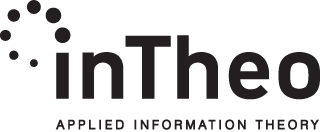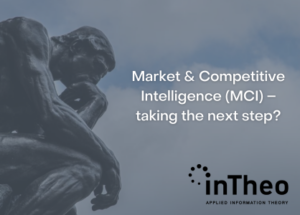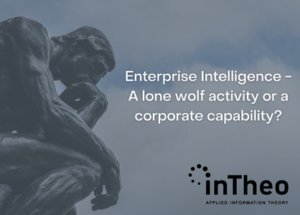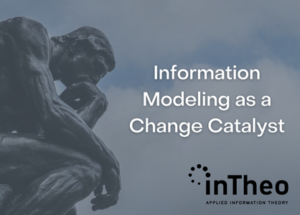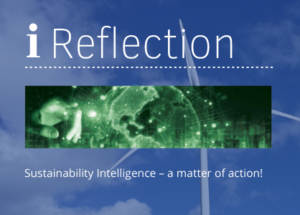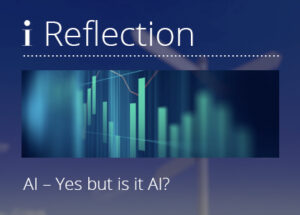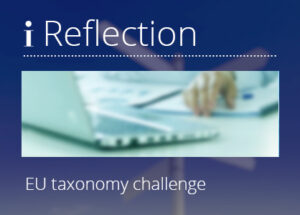Articles
Market & Competitive Intelligence (MCI) – taking the next step?
April 2023, Developing capabilities is an ongoing activity but every so often, a team, a center of excellence, or a group of specialists set out to undertake a more focused development step in order to evolve the operation to a distinctively higher level. When doing so, one key question tends, however, to be forgotten and that is the question of the as-is position. Understanding the current, for the benefit of the future, requires different frameworks for different operations. This paper aims at supporting, and inspiring, MCI-teams in taking the next step.
Enterprise Intelligence – A lone wolf activity or a corporate capability?
January 2023, One can find them in any company, the “lone wolves of intelligence”, i.e. individual subject matter experts with a mandate “to keep themselves updated” but with no, or very limited, communication with the wider organization around them. They do a fantastic job in information gathering and specialist skills development and they even reduce the risk of market and technical errors, but is that really intelligence operations in its true meaning? …
Information modeling as a change catalyst
October 2022, Can information modeling really drive or support change management? To the unprepared ear it does admittedly sound a bit farfetched. Information modeling is there for IT systems and change management is a managerial task driven by externalities such as technology evolutions, regulatory changes, or market shocks caused by a pandemic and a large-scale war in Europe. Right? Yes and no, …
Sustainability Intelligence – a matter of action!
February 2022, “And UNDP said, Let there be Sustainability and there was ……..” Was there? Given the current grandeur of many proclamations in this field, the paraphrase of the Genesis 1:3 intro above is really not that farfetched. However, asking many scholars, as well as representatives of the younger generations today, we quickly learn that their opinions regarding the actual doings of those uttering these fine words are less than supportive. It is rather “They will never ever succeed in getting the changes actually needed under way”.
AI! Yes, but…. is it AI we are talking about?
September 2021, Inzyon Reflections: AI (Artificial Intelligence), AI (Augmented Intelligence), ML (Machine Learning), RPA (Robotic Process Automation) and other more or less well-known acronyms are popping up everywhere, promising ever brighter futures, or futures resembling, Huxley-like, Brave new worlds. The truth? Long term, on average, probably somewhere in the middle (as usual). The problem however is that as long as the “debate” focus on the extremes of the usage spectrum is it hard to a agree on reasonable basis for AI investments.
A summary of a summary of the EU Taxonomy challenge – a summary
January 2021, Inzyon Reflections: When approaching, and trying to digest, the regulatory framework that in general terms is called the “EU Taxonomy” for sustainable finance, you quickly realize that many thousands of pages have already been produced and that many more, most certainly, are under way. Adding to the sheer volumes of text is also the challenge that most readers approach the task directly from the perspective of how to apply the taxonomy for their own operations. Within a blink you find yourself tangled in a myriad of almost impenetrable measures and details. To feel overwhelmed in such a situation is perfectly human.
Company Filings narratives – a wealth of ESG analysis data
October 2020, Inzyon Reflections: In a world of indexes and ratings it is truly refreshing to encounter, every now and then, the acclaimed imperative of company narratives. In a recent webinar hosted by Morningstar/Sustainalytics (Finding your path in the upcoming ESG regulations) this particular factor for ESG research was highlighted as one of those with the unfortunate combined character of being both important and at the same time complex to address due to the lack of standards. Discussing firms publishing sustainability reports, Andy Pettit, Morningstar Director on Policy Research commented that “They are often long on text, short on metrics, and not at all easy to compare”
Shrinking the haystack to find the needles you want – Selecting and Connecting Sources to Your Intelligence Portal
September 2016, SCIP Magazine Abstract: Let’s start by imagining your sources as a huge haystack of unstructured big data. Next, imagine that you must quickly search through it to find the golden information needles that you urgently need. Finally, picture the haystack as not only growing in size every time you see it, but also having new haystacks appear in other places. It becomes harder and harder to find the needles, right? Yet, this is the information world we live in today. We believe that the mysticism and confusion surrounding sources is largely due to challenge posed by “big data,” i.e. the enormous quantity of available sources. The challenge before us is: how do we deal with the huge volumes of secondary information flows today? This article addresses a very straightforward question: what types of sources are there and how do we make the best use of them?
Navigate your intelligence world by using taxonomies – How Applying Structure Will Help You Steer in the Right Direction
October 2015, SCIP Magazine Abstract: Taxonomies – how can such a powerful concept and tool for information management, both generally and in the world of Competitive Intelligence, attract such a variation of opinions? The answer is actually very simple: there are different types of taxonomies and different ways to deploy them. With almost 20 years of practical experience of taxonomies in business, both in CI and Knowledge Management (KM), we are confident to say that it is one of the most powerful tools (if not the only tool) currently on hand to manage, make use, and make sense of the ever growing “big data of unstructured information”.
Introduction to Competitive Intelligence Portals – The What, Why, and How of using IT tools to support your intelligence work
July 2015, SCIP Magazine Abstract: The number of companies that are successfully deploying various kinds of CI portal solutions are constantly growing. The phrases CI portals, Intelligence systems, CI tools, MI portals are heard everywhere, but what do they really mean? And why should you really care? The purpose of this article is to bring some clarity to the concept of CI portals, their range of functionalities, and the benefits an intelligence team should expect them to provide.
Enterprise Intelligence Maturity Model
September 2014 Abstract: This paper outlines a maturity model for enterprise intelligence operations. It is intended for plain self-assessment or structured capability development planning. The model comprises all aspects of the intelligence apparatus, from definitions and goals to software systems and output models.
Information Modeling for Enterprise Intelligence Operations
July 2014 Abstract: Enterprise Intelligence Operations (or whatever synonym that might apply) is probably one of the most information intensive activities undertaken in corporations these days. The amount of open sources is growing continuously and long gone are the days when intelligence was mainly about finding information. Today it is about selecting, filtering, structuring and analyzing. This paper outlines a rather simple, yet proven powerful, model for primary sorting/structuring/classification of information based on intended usage.
Knowledge Management and Information Management – back to their roots
October 2012 Abstract: This paper addresses one of the current billion dollar challenges of large organizations – i.e. how to make optimal use of all information at hand. The bonanza of academic definitions and the never ending stream of “new” labels on old capabilities, typically offered by large consulting firms, do not help. It is necessary to get back to the roots of the needs and build from there. This paper suggests a definition triad; information – knowledge – algorithm and a usage dualism; decisions and enrichment as the only necessary terms to relate to for the theory building. Further, these five terms are perfectly sufficient in order to build complete models for both organizational architectures and computer aided tools for information management and all derivatives of that label.
Reinventing Brand Management with Scenarios and Competitive Intelligence
April 2012 Abstract: Branding has always been imperative to business success and the importance of brand management is only increasing. This paper attempts to illustrate a neccesary connection bewteen brand management and the tools of Competitive Intelligence and Scenario Management.
The value of information
October 2009 Abstract: This paper decribes a model for valuation of information in a corporation. The model can be used to evaluate the efficiency of both software investments and organisational changes from a perspective of information management.
No more time spent reinventing the wheel
2001, Business Network Abstract: The man who beat Bill Gates to the honour of International Brain of the Year is a Swedish Futurologist by the name of Leif Edvinsson. He has stated that every Western individual could achieve three times his income if companies were more efficient in using available knowledge resources. Edvinsson’s view is that the intellectual capital within a firm is as valuable as other, more tangible assets. In this article, Pia Helena Ormerod shed some international lihgt on the startup Comintelli, at that time named Comintell.
Care for the Community
Octomer 2000, KM Magazine Abstract: In a knowledge-driven society there are only two key assets to manage. The first is the information your company possesses. The second is the individuals who, for every minute that passes, increase the value of small pieces of information by adding experience, knowledge and associations in order to produce other, even more valuable pieces of information. This cycle continues endlessly and the companies and managers who succeed in making a given information cycle work to their advantage will be the long term winners! In this article, KM Magazine picked up on our then very new concept for deploying commuinties of practice thinking in Competitive Intelligence operations.
There is too much of “T” in IT and too much of “R” in HR
September 2000 Abstract: This paper decribes a value destructing culture and the difference between many IT and HR departments in large organisations. The fact that IT departments tend to focus on technology rather than information and HR departments tend to focus on the legal aspects of personnel management rather than competence and knowledge transfer is a continual challenge to overcome.
